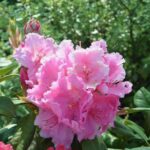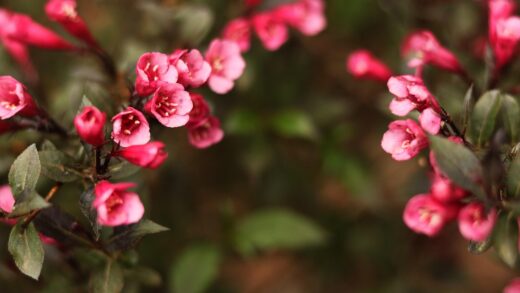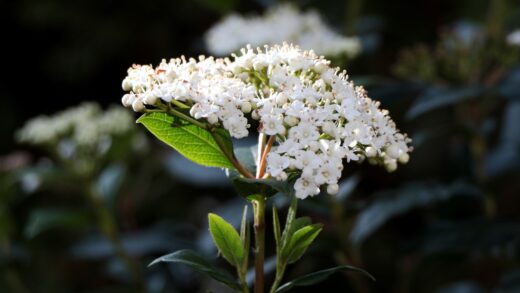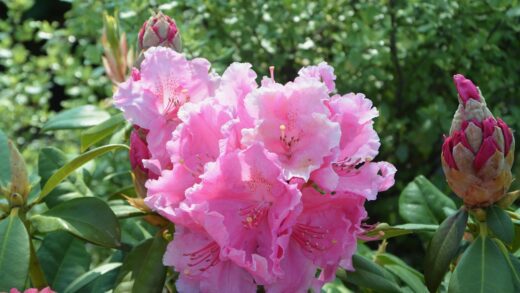The single most critical factor for the successful cultivation of a vibrant and healthy snow-on-the-mountain is the provision of abundant, direct sunlight. This plant is a quintessential sun-lover, and its entire performance, from its growth habit to the intensity of its famous variegation, is directly dictated by the amount of light it receives. To achieve the spectacular “snowy” effect on the upper leaves and bracts, you must plant it in a location that receives a minimum of six to eight hours of unfiltered, direct sun each day. Any less than this, and the plant’s appearance will be significantly compromised, failing to deliver the visual impact for which it is known and cherished.
In its native habitat on the open prairies, snow-on-the-mountain is accustomed to growing without the shade of trees or buildings, basking in relentless sun throughout the day. It has evolved to not just tolerate but to demand these high-light conditions. The pigments and processes that create the bright white margins on its foliage are triggered and fueled by high levels of solar radiation. This is not a plant that can be “made to work” in a partially shaded corner; its need for sun is non-negotiable for a good display.
When selecting a planting site, it is essential to observe the path of the sun across your garden throughout a typical summer day. Look for a spot that is free from the shadows cast by trees, fences, or your house, especially during the peak sunlight hours from mid-morning to late afternoon. The more sun you can provide, the better the results will be. The plant will reward you with stronger stems, a more compact and bushy habit, and, most importantly, the most brilliant and extensive white variegation possible.
This absolute requirement for full sun makes snow-on-the-mountain an ideal choice for the hottest, sunniest, and often most challenging parts of a garden. It thrives in locations that might cause other, less sun-loving plants to scorch or wilt. It can be used to great effect in south- or west-facing borders, in rock gardens, or along sunny driveways and paths. By understanding and respecting its fundamental need for light, you are setting the stage for a truly dazzling performance.
The critical need for full sun exposure
The term “full sun” in horticulture generally refers to a location that receives six or more hours of direct, unobstructed sunlight per day, and for snow-on-the-mountain, this should be considered the absolute minimum. Ideally, the plant will perform best with eight or more hours of sun. This is not merely a preference but a biological necessity for the plant to achieve its characteristic appearance. The physiological processes that lead to the development of the white-margined leaves are light-dependent and will not be initiated in lower light conditions.
More articles on this topic
The energy captured from intense sunlight fuels the vigorous growth that this plant is known for. It allows the plant to efficiently photosynthesize, producing the sugars it needs to build strong cell walls and a robust root system. This results in sturdy, upright stems that can support the plant’s bushy growth without flopping over. In contrast, a plant grown in insufficient light will divert its energy into elongating its stems in an attempt to reach for more sun, a process known as etiolation, which results in weak, leggy, and unattractive growth.
Furthermore, the full sun exposure helps to keep the foliage dry, which is a key factor in preventing fungal diseases. The sun’s heat quickly evaporates any moisture from rain or morning dew, creating an environment that is inhospitable to pathogens like powdery mildew. This, combined with the plant’s natural drought tolerance, makes it a resilient choice for hot, dry locations where other plants might struggle with both heat stress and disease pressure.
When planning your garden, prioritize your sunniest spots for plants like snow-on-the-mountain that absolutely require them. Reserve your shadier areas for plants that are specifically adapted to those conditions. Trying to force a sun-loving plant to grow in the shade is a common gardening mistake that invariably leads to disappointment. By matching the right plant to the right place, you work with nature rather than against it, ensuring a healthier garden and more successful outcomes.
How light intensity affects variegation and growth
The stunning white variegation of snow-on-the-mountain is a direct response to high light intensity. The plant produces chlorophyll, the pigment that makes leaves green, in all of its foliage. However, in the upper leaves and the bracts that surround the flowers, high levels of sunlight trigger a process that masks or suppresses chlorophyll production along the leaf margins, revealing the white tissue underneath. This is likely an adaptation to protect the small, delicate flowers from excessive sun and to act as a highly visible signal to pollinators.
More articles on this topic
In lower light conditions, this trigger is not activated as strongly, or at all. The plant, sensing that it needs to maximize its photosynthetic capacity in the limited light, will produce chlorophyll throughout the entire leaf. The result is a plant that is almost entirely green, with little to none of the desired white coloration. The difference can be dramatic; a plant in full sun will look like it has been dusted with snow, while its genetically identical counterpart in part shade will be a simple, unremarkable green plant.
Light intensity also has a profound effect on the plant’s overall form, or habit. In full, bright sun, the plant receives ample energy and has no need to stretch for light. This results in shorter distances between the leaf nodes on the stems, creating a compact, dense, and bushy plant that is well-branched and sturdy. This compact habit makes the variegated tops appear even more dramatic, as they form a thick, cohesive canopy of white and green.
Conversely, in shadier conditions, the plant will exhibit a much more open and leggy growth habit. The stems will be taller, thinner, and weaker as the plant puts its energy into gaining height to reach for sunlight. The foliage will be sparser, and the overall impression will be one of a lanky, less vigorous plant. This combination of poor form and lack of variegation makes it wholly unsuitable for any location that does not provide the intense light it craves.
Identifying an ideal planting location
To find the perfect spot for your snow-on-the-mountain, you need to become an observer of the sunlight in your own garden. The ideal location will be one that is completely unshaded from at least 10 a.m. to 4 p.m. during the summer months. This six-hour window of peak solar intensity is crucial. A spot that gets only morning sun or only late afternoon sun will not be sufficient. You are looking for the area that gets the longest possible duration of direct, overhead sun.
Walk around your property on a sunny day and take note of the areas that remain in the sun the longest. These are often south- or west-facing areas of your garden. Be mindful of shadows cast by your house, garage, and any large trees or shrubs, and remember that the angle of the sun changes throughout the seasons. The spot you choose should be sunny not just in late spring when you are planting, but throughout the summer and into the early autumn when the plant is at its peak.
Beyond the sun exposure, the ideal location should also have the right kind of soil. As this plant is prone to root rot, the soil must be well-draining. A sandy or gravelly soil is excellent. If you have heavy clay, the sunniest spot in your yard may still not be suitable unless you amend the soil heavily with organic matter or create a raised bed. A sloped area can also be a good choice, as gravity will naturally assist with drainage.
Consider the plant’s eventual size and its neighbors when making your final decision. Since it grows to a height of two to three feet, it should be placed in the middle or back of a border so it does not shade shorter plants. Its brilliant white and green foliage looks stunning next to plants with dark leaves or brightly colored flowers. By combining the requirements of sun, drainage, and good design, you can pinpoint the perfect home for your snow-on-the-mountain to truly shine.
Consequences of insufficient light
Planting snow-on-the-mountain in an area with insufficient light will lead to a cascade of negative consequences that result in a profoundly disappointing plant. The most immediate and noticeable effect will be the lack of variegation. Instead of the iconic bright white margins on the upper leaves, you will be left with foliage that is a plain, uniform green. The primary aesthetic appeal of the plant will be completely lost, defeating the purpose of growing it in the first place.
The second major consequence is a poor growth habit. In a desperate attempt to find more light, the plant will grow rapidly upwards, resulting in tall, thin, and weak stems. This etiolated growth is structurally unsound, making the plant much more likely to bend, break, or flop over, especially in wind or rain. The foliage will be sparse along these elongated stems, creating a spindly and unattractive appearance rather than the dense, bushy form seen in healthy, sun-grown specimens.
Furthermore, a plant grown in shade is more susceptible to disease. The lack of direct sun and the reduced air circulation around the denser foliage of other shade-tolerant plants create a more humid microclimate. This environment is ideal for the development of fungal diseases like powdery mildew. A light-starved plant is also a stressed plant, and its weakened state makes it less able to fend off potential pathogens or pests.
Ultimately, planting this sun-worshipper in the shade is a futile exercise. The plant will struggle to survive and will certainly not thrive. It will fail to produce its signature colours, it will have a weak and floppy structure, and it will be more prone to health problems. It serves as a crucial lesson in gardening: understanding and respecting a plant’s fundamental requirements, especially for light, is the key to success. For snow-on-the-mountain, the verdict is clear: full, intense sun is not just a suggestion, it is a command.


















